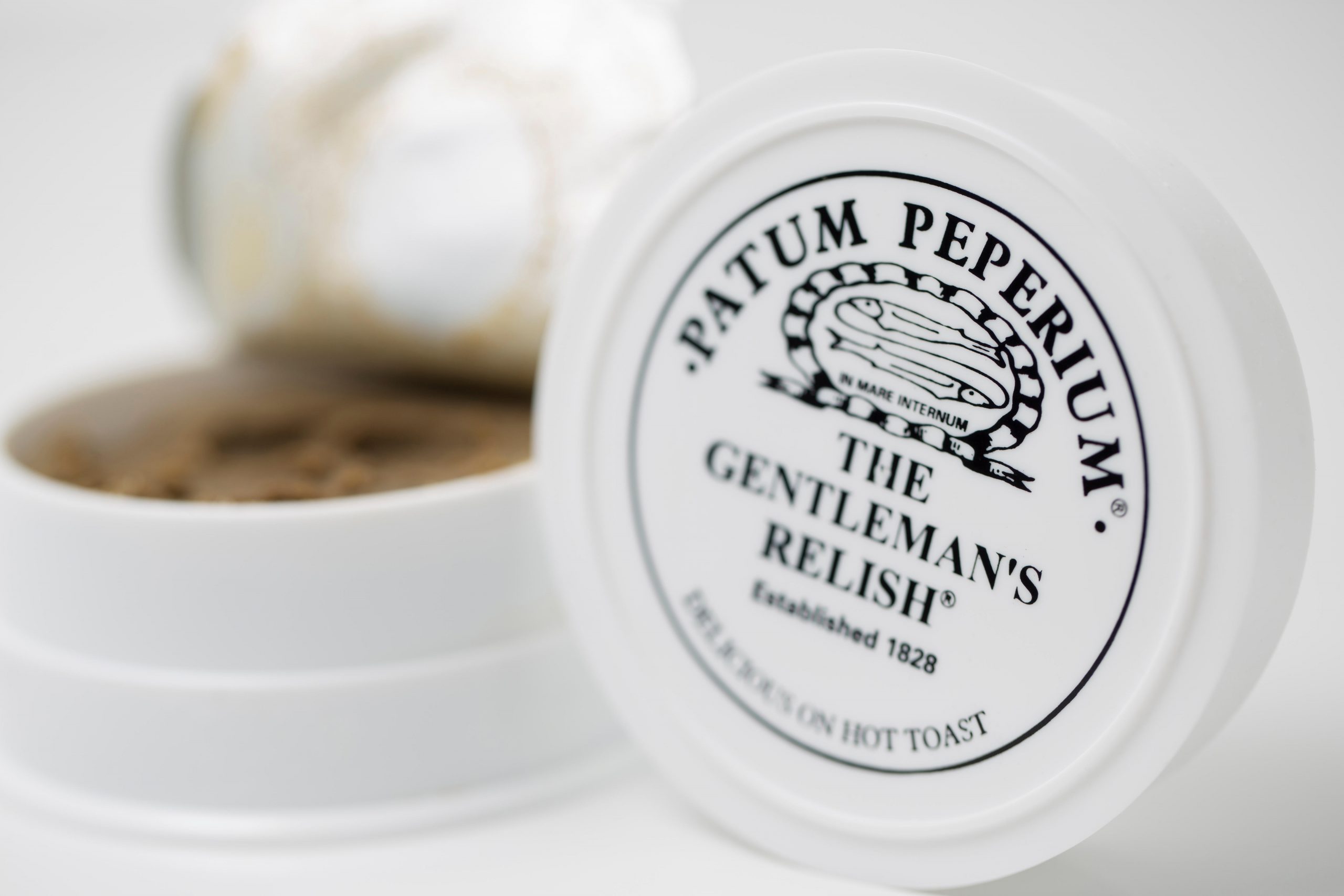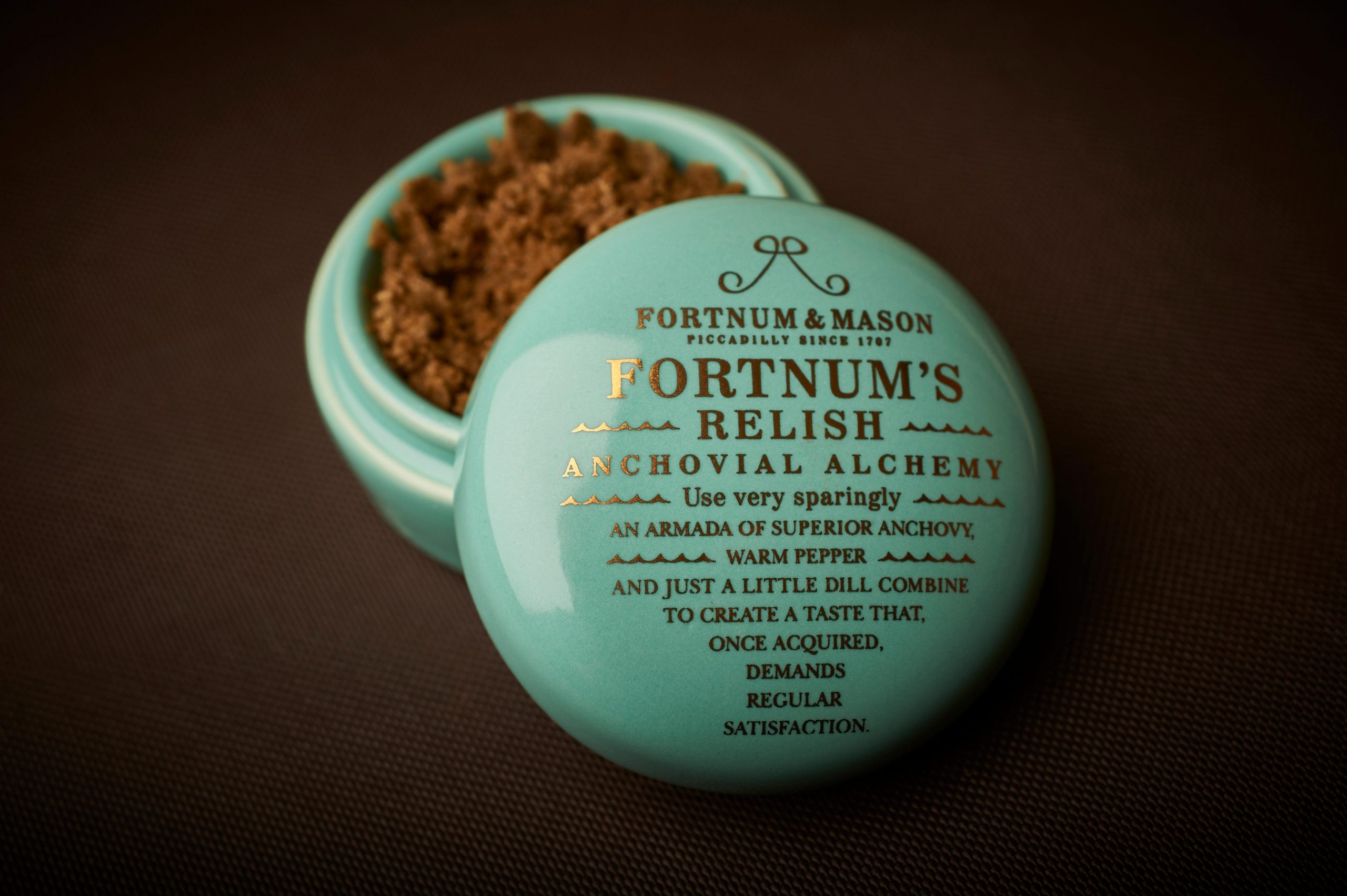Curious Questions: Who came up with Gentleman’s Relish?
Martin Fone takes a look at one of the all-time great toast toppers: Gentleman's Relish.


Sometimes simplicity is best.
Take hot, buttered toast. The joy that it can bring was wonderfully encapsulated in Kenneth Grahame’s The Wind in the Willows (1908), where a plate ‘piled up with very hot buttered toast, cut thick, very brown on both sides, with the butter running through the holes in great golden drops, like honey from the honeycomb’ sent Toad into ecstasy, evoking images ‘of warm kitchens, of breakfast on bright frosty mornings, of cosy parlour firesides on winter evenings…’
For some of us buttered toast does not cut the mustard, lacking that oh so essential hit of umami bringing every taste bud and salivary gland to life that only an additional coating of the Gentleman’s Relish can provide. At first glance, it is not overly appealing, a sludgy brownish-grey paste with a pungent, overpowering fishy smell. Anchovies make up around 60% of its content, putting it firmly in the tradition of fermented fish sauces like garum, the ketchup of the Roman world.
Always judge a foodstuff by its taste, though, and once spread lightly over toast its surprisingly delicate, delicious, saline taste screams of sophistication. It was eaten by James Bond in For Your Eyes Only (1981), named as one of the ten foods that Nigella Lawson could not live without, and chosen as her one luxury item by the writer, Jessica Mitford, on Desert Island Discs in 1977.

The sight and smell of it, though, are too overwhelming for some while the anchovies and high sodium content puts it out of bounds for those following plant-based diets or with health conditions such as high blood pressure. To protect the unwary, the Gentleman’s Relish is kept under wraps, sealed under foil in a low, opaque, white, plastic, capstan-like container, adding to its mystique.
Opinion is divided as to when is the best time to eat it. Admiral Sir Sydney Smith, an early advocate of the Gentleman’s Relish, described it in a note as ‘the most delicious breakfast-table accompaniment’ he had yet tasted. For Freya, in Poppy Alexander’s The 12 Days of Christmas (2021), the sight of pots of it in a delicatessen reminded her of afternoons sitting in the cosy cottage kitchen in front of the Aga with her mother, ‘having round after round of hot buttered toast with the salty, anchovy paste scraped sparingly on top of the pools of melted butter’.
However, the Gentleman’s Relish came into its own as an essential component of a 19th century dinner party. Consisting of course after course of rich foods, washed down with copious amounts of alcohol, so over-facing were they that by the time the sweet course had been cleared away, the palate of even the most experienced trencherman had been beaten into submission.
Exquisite houses, the beauty of Nature, and how to get the most from your life, straight to your inbox.
Served after the dessert and before coffee, the savoury course, usually a small, incredibly salty dish, was designed to shock the gastric juices into action and, because of its salinity, encourage the diners to slake their thirst once more. The Gentleman’s Relish was the ideal savoury dish being, as Mrs Beeton rather elegantly put it in her Book of Household Management (1861), ‘an excellent bonne bouche which enables gentlemen at wine-parties to enjoy their port with redoubled gusto’.
The Gentleman’s Relish was also a cooking ingredient, adding a hit of umami when mixed into the mince for a Shepherd’s Pie, used as a seasoning for stews, especially lamb, melted in with soft scrambled eggs or served with baked potatoes, potato cake, or croquettes. However, for sheer indulgence Scotch Woodcock takes some beating, toasted bread buttered with a layer of the Gentleman’s Relish, topped with buttery scrambled eggs and two anchovy fillets.
It was Englishman John Osborn, a grocer or provision merchant living in Paris, who developed the recipe for the Gentleman’s Relish. A rather complicated process, it involved taking Spanish anchovy fillets, packing them for eighteen months into barrels of salt to mature, and then brine rinsing them, before cooking them at a simmer, cooling and then blending them with butter, rusk, and Osborn’s ‘secret blend’ of herbs and spices to give it its luxurious depth of flavour.
Experimenting with anchovies seems to have been an early 19th century pastime. By 1828 Osborn had begun marketing his spread to his Parisian clientele as a tasty and nutritious snack that could be easily transported and stored, predating Lea and Perrins’ anchovy-based Worcestershire sauce by nine years.
To give it extra gravitas, he called it Patum Peperium, mixing his Latin and Greek etymological roots as freely as he did his herbs and spices. It was also a misnomer as it is more of a fish butter than a paste of peppers. Nevertheless, the name stuck, and the spread’s distinctive taste began to find favour with the sophisticated palate of the Parisian gourmand, winning a Citation Favorable for Osborn at the Paris Food Shows of 1849 and 1855.
Osborn’s son moved the business over to England where Patum Peperium, now the fashionable dish for the savoury course, was so closely associated with the gentry and gentlemen’s clubs that it was considered ‘too strong’ for ladies and ‘too refined’ for the hoi polloi. When people asked for it, they added the rider ‘You know, the gentleman’s relish’. The Gentleman’s Relish was only incorporated onto the product’s labelling later in the century where it has remained ever since.
Success brought competition, strengthening Osborn’s resolve to keep the recipe for his spice blend which gave Patum Peperium its distinctive taste a closely guarded secret. Rival products were but a pale imitation of the real thing and to ensure that that remained the case, the secret of Osborn’s mix was kept tightly within the family, passed down from father to son for over a century.

In 1971, however, with no heir to pass the business on to, it was sold to Elsenham Quality Foods, who maintained the tradition of secrecy by ensuring that no one employee knew the full recipe. Changes, though, were made, including replacing the distinctive round porcelain pots with plastic and, in 1998, to celebrate its 170th anniversary, the introduction of Angler’s Relish, featuring mackerel, and Poacher’s Relish, made with salmon.
In 2001 Elsenham were bought out by G. Costa which was in turn acquired by AB World Foods with the Gentleman’s Relish joining the company’s stable of distinctive flavours that included Patak’s, Blue Dragon, Levi Roots, Al’Fez, and Tabasco. It is now manufactured in Poland, still using Osborn’s original recipe, with supermarkets accounting for around 70% of the million or so pots sold a year. Although plastic pots are the norm, porcelain pots are revived for the annual special edition, each one hand painted.
On the internet there are recipes that aim to replicate Osborn’s blend of spices and herbs, still a closely guarded secret. One on British Food History’s website uses a sextet of classic 19th century spices – Cayenne pepper, cinnamon, ground nutmeg, ground mace, ground ginger, and ground black pepper – with Cayenne pepper the dominant spice to provide heat.
For those of us content to eat the real thing, the instructions confusingly advise use to use it both sparingly and within six weeks of opening, but, as Andrew Webb observed in Food Britannica (2011), it is not ‘a product for lavish slathering, but for gentlemanly deportment’. Quite so.
After graduating in Classics from Trinity College Cambridge and a 38 year career in the financial services sector in the City of London, Martin Fone started blogging and writing on a freelance basis as he slipped into retirement. He has developed a fearless passion for investigating the quirks and oddities of life and discovering the answers to questions most of us never even think to ask. A voracious reader, a keen but distinctly amateur gardener, and a gin enthusiast, Martin lives with his wife in Surrey. He has written five books, the latest of which is More Curious Questions.
